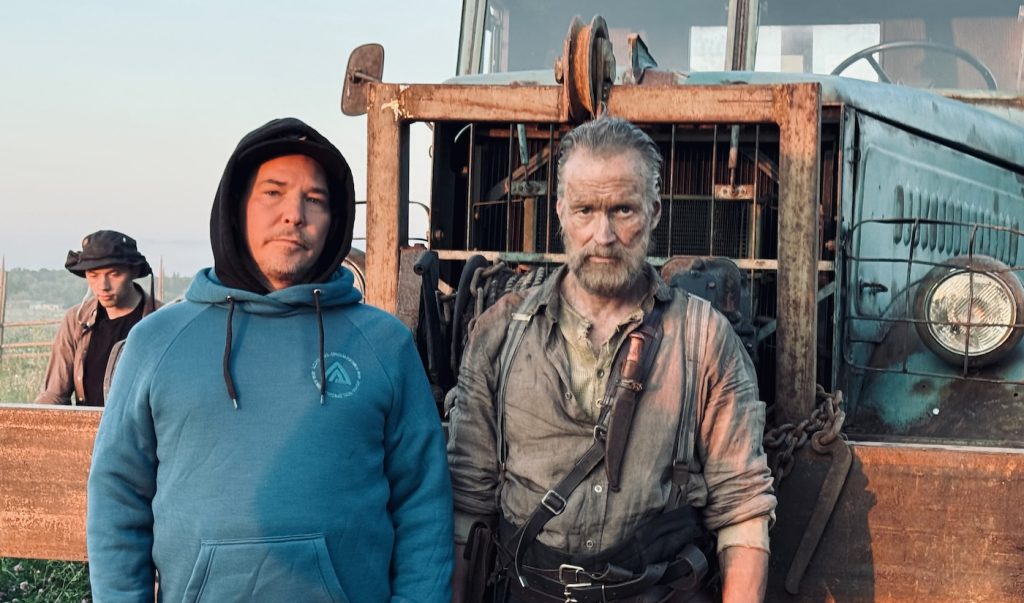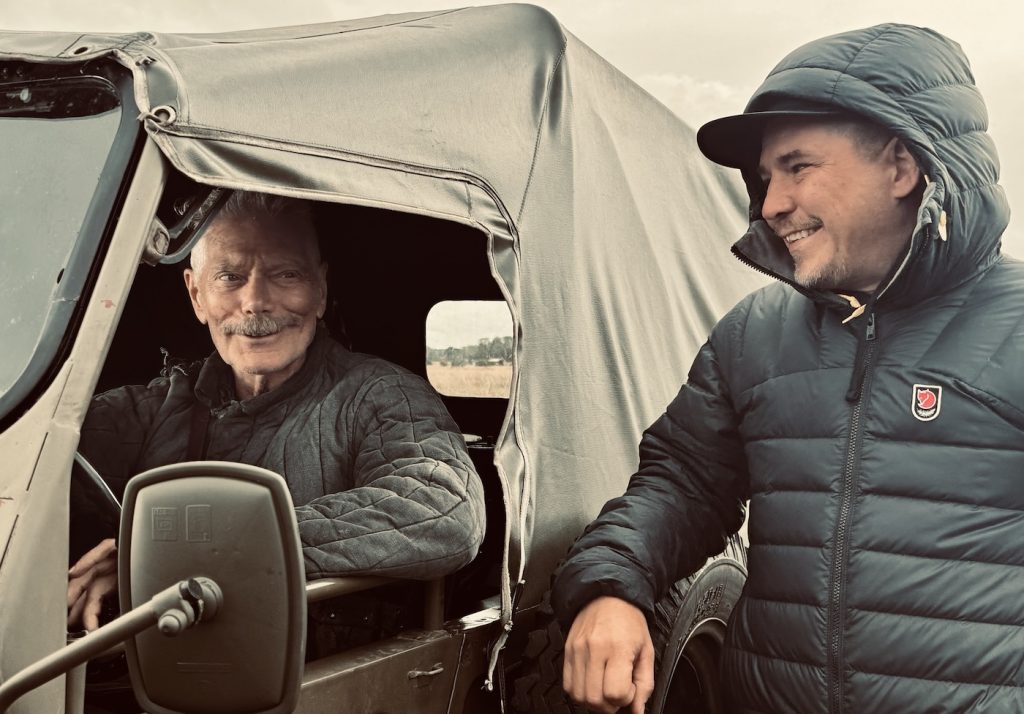How “SISU: Road to Revenge” Writer/Director Jalmari Helander Crafted Seven Chapters of Unrelenting Chaos
If John Wick had a Finnish uncle, it would probably be Aatami Korpi (Jorma Tommila) from writer-director Jalmari Helander’s sleeper hit SISU (2022). In those events, the unspoken, never say die ex-soldier unearths gold in his war-torn country only to fend off German officers trying to steal it, killing hundreds in the process and earning him the moniker sisu. (The Finnish word roughly translates to “unyielding courage in the face of impossible odds.”)
Korpi now returns in SISU: Road to Revenge, set in 1946 at the close of World War II. After Finland ceded part of its eastern border to the Soviet Union, thousands are forced to resettle on the Finnish side. A narrator grimly notes, “Most would never see home again.” The exception – Aatami – who passes through a Soviet border station on his way back to his log cabin, where his family, including two sons, were brutally murdered. In their memory, he dismantles the cabin piece by piece, determined to rebuild a future. When Soviet generals learn of his reappearance, they scheme to have him killed, setting off seven chapters of unrelenting chaos and vengeance (and a little bit of hope).
When asked if the story was purposely structured around the number seven, a symbol of good luck, Helander tells The Credits the idea came serendipitously. “I didn’t have the chapter idea when I was shooting the first one. It came in the edit, and it happened to be seven, so I wanted to repeat that in the second one.”
The first chapter reintroduces us to Aatami collecting family memories. It is here we meet an extension of his character: the battered truck he drives. “We were thinking and talking a lot about that, and from the very beginning, I knew I wanted a lot of motor sounds in the film. It should sound and feel like the smell of gasoline,” says Helander while in Bangkok during prep for his next feature, John Rambo. “So we spent quite a lot of time building those sounds. I think the truck itself is a beautiful thing. It’s almost like a character in the film.”

In the following chapter, we meet Igor Draganov (Stephen Lang), the hired gun seeking Soviet revenge. By making the antagonist equally strong yet menacing, the director added a touch of sadness to his persona. “He basically doesn’t have a home either, and he’s probably been an orphan himself. And he notices that the government has started to use him as a tool, and he’s been doing a lot of bad stuff in his life. I don’t think he’s happy about it either, but that’s his life,” says the director.

The following three chapters see the action take off – mercenaries, motorbikes, and tanks – threaten to take Aatami’s life at every turn. In crafting the suspense, Helander teamed with cinematographer Mika Orasmaa (Bordertown, Doctor Who), creating a camera language that felt like panels in a comic book, starting wide and moving closer to the action. “I like to start with wide shots because I love open spaces. They’re like an empty canvas on which I can put things,” the director says. “I also like to do it because it’s really simple to understand. The wide shot explains the whole thing, and then we start to make it in pieces.”
Estonia doubled as post–World War II Finland, its vast landscapes and tree-lined countryside capturing the desolate tone filmmakers envisioned. Within this setting unfolds one of the most technical (and explosive) sequences where a squadron of Soviet fighter aircraft hunts Aatami. Desperate to escape, he speeds into an abandoned shelter but it offers little protection as a barrage of bombs rains down. Production was able to find an existing practical location for the fiery scene but it came at a cost. “We bought the house from the owner, but when he realized it’s because of a movie, he wanted, of course, more money,” says the director. “It became pretty expensive but I’m glad we did it because it looks good when you do things for real.”
Just as Aatami pushes the limits of survival, the director pushed his own limits behind the camera. Makeup artist Salla Yli-Luopa turns a moment of torture visceral. “What Aatmai goes through I think actually went too far. I had to take a couple steps back in a few places because I wanted to find the limit,” admits Helander. “Even though I can imagine most people thinking I wouldn’t have a limit but I do. I was looking at the monitor and I was like, ‘What are we doing?’ Let’s take a couple steps back and do something else.” The intensity of the scene punctuates the immeasurable strength and will of Aatami.
While the pulse of the action climaxes in Chapter 6, the final chapter displays its heart. Asked if the SISU book is closed, Helander says, “It might be. I’m most proud of the end scene. When I had the idea for it I knew it would elevate this film to a different level. It was also a difficult scene to edit. There was so much good material going on and we had to find the best way to do it.” If this is the end – at least we can all share in Aatami’s smile.
SISU: Road to Revenge makes its way into theaters on November 21.



